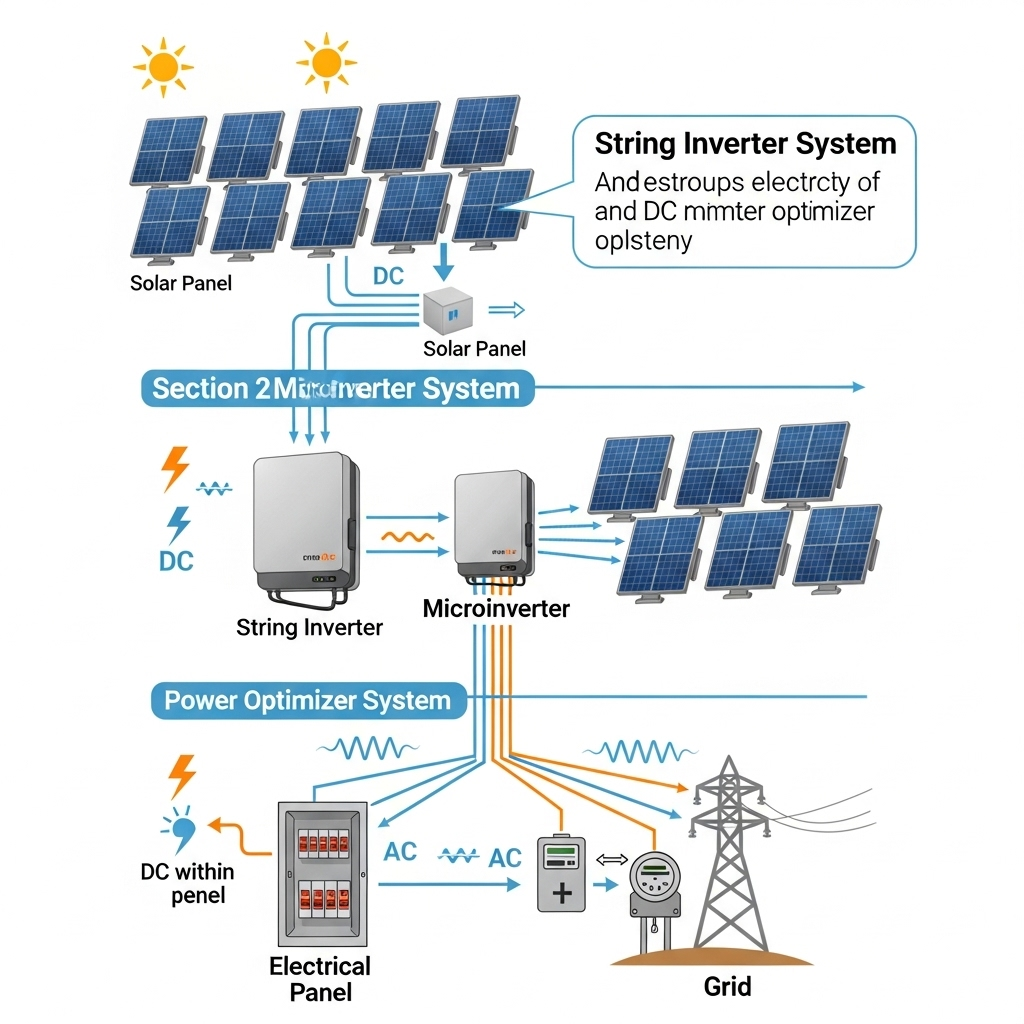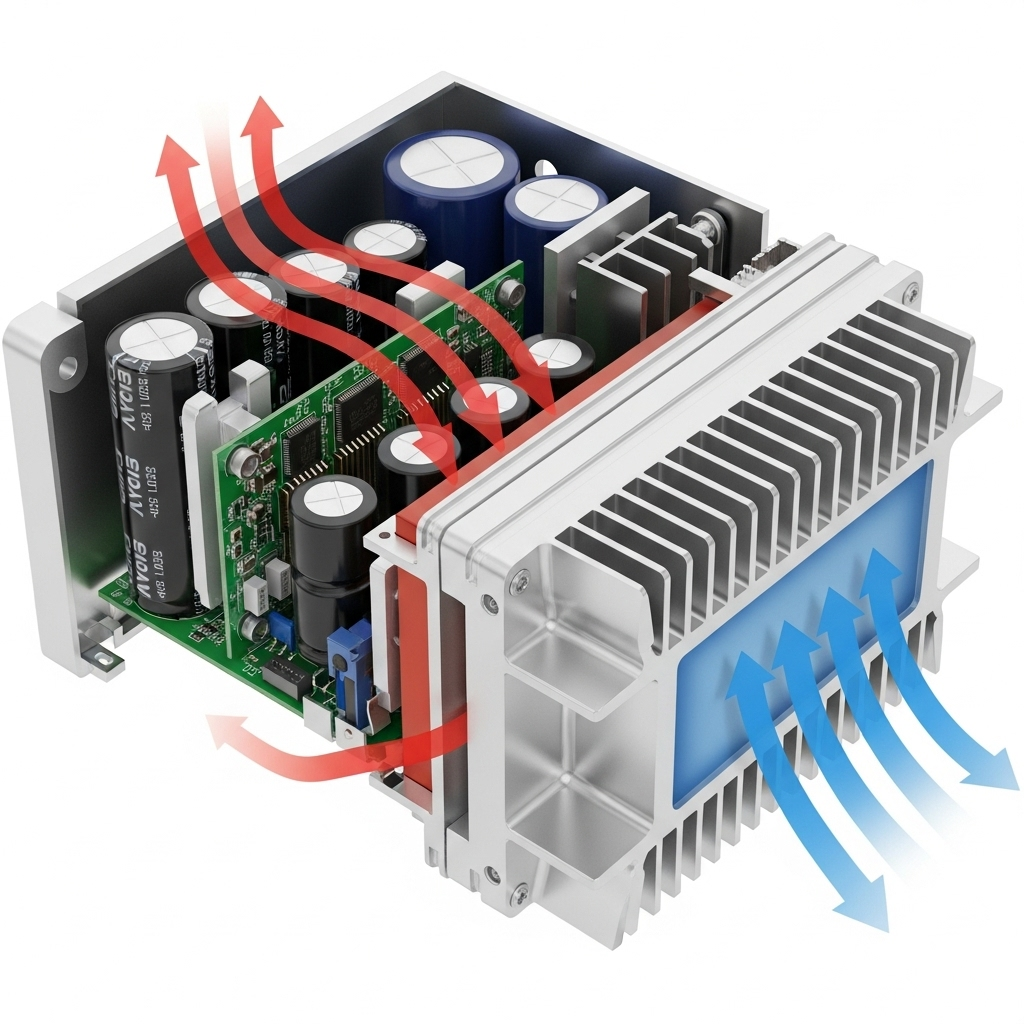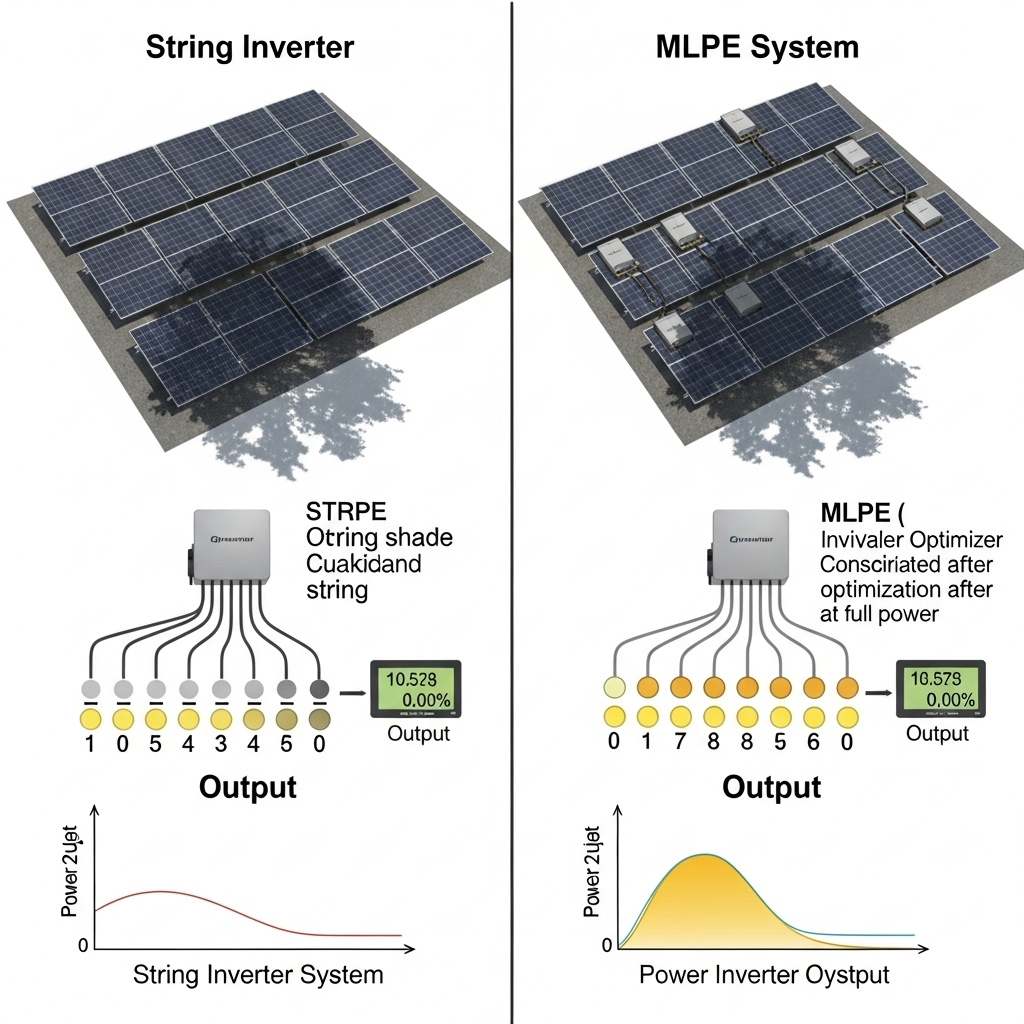Optimizing a solar energy system involves more than just selecting panels and an inverter. The relationship between these two components, defined by the Inverter Loading Ratio (ILR), is a critical design parameter. This ratio determines how much DC power from your solar panels is sent to the inverter relative to its AC power rating. Getting it right is key to maximizing energy production and financial returns. This analysis compares the ILR considerations for traditional string inverters against Module-Level Power Electronics (MLPE), including microinverters and power optimizers.
Understanding the Inverter Loading Ratio (ILR)
The Inverter Loading Ratio, also known as the DC-to-AC ratio, is a fundamental concept in photovoltaic system design. It directly influences a system's performance, efficiency, and overall energy harvest throughout the year.
Defining the DC-to-AC Ratio
The ILR is calculated with a simple formula: the total DC power capacity of the solar array divided by the inverter's maximum AC power output. For example, if you have a 7.7 kilowatt (kW) solar array connected to a 6 kW inverter, the ILR is 7.7 / 6.0, which equals approximately 1.28. This means the DC capacity of the array is 28% higher than the inverter's AC capacity. The International Energy Agency (IEA) recognizes the inverter load ratio as a key metric in system planning, as noted in their reports on Next Generation Wind and Solar Power.
The Strategy of 'Oversizing' a Solar Array
It may seem counterintuitive to install more DC panel capacity than the inverter can handle. However, this practice, known as 'oversizing,' is a strategic decision. Solar panels rarely operate at their full rated power due to real-world factors like cloud cover, lower sun angles in the morning and evening, and high temperatures. By oversizing the array, you enable the inverter to reach its peak efficiency earlier in the day and maintain it for longer, capturing more total energy. This approach helps compensate for panel degradation over time and boosts production on overcast days.
What is Energy Clipping?
The primary trade-off of a high ILR is 'clipping.' This occurs when the DC power produced by the panels exceeds the inverter's maximum AC output capacity. The inverter intentionally curtails, or 'clips,' the excess energy to protect itself. While this sounds like a loss, a well-designed system with a proper ILR will experience minimal clipping, and the energy gained during non-peak hours far outweighs the energy lost during a few peak hours on the sunniest days of the year.
ILR Considerations for String Inverters
String inverters are a common and cost-effective technology, but their architecture places specific demands on ILR calculations. Understanding these nuances is crucial for effective system design.

Centralized Power Conversion
A string inverter processes power from a group, or 'string,' of solar panels connected in series. The entire string's performance is dictated by the lowest-performing panel. If one panel is partially shaded, its reduced output lowers the output of every other panel in that string. This makes the system highly sensitive to uniform conditions, and the ILR must be calculated carefully based on the array's overall expected output.
Calculating Clipping and Gains
With a string system, oversizing the array helps maximize the inverter's uptime at its most efficient operating point. Designers accept a certain amount of clipping on clear, cool days as a trade-off for significantly better performance in all other conditions. The goal is to find an ILR that balances these factors for the highest annual energy yield. An ILR between 1.15 and 1.35 is common for string inverters, depending on the local climate and irradiance levels.
Sizing for MLPE: Microinverters and Power Optimizers
Module-Level Power Electronics (MLPE) change the design equation by optimizing power at each individual solar panel. This granular control offers greater flexibility in system design and ILR calculations.
Panel-Level Optimization
MLPE technologies, including microinverters and power optimizers, isolate the performance of each panel. A shaded or soiled panel no longer compromises the output of its neighbors. This fundamental difference means the system can harvest more energy, especially on complex roofs with multiple orientations or intermittent shading. As highlighted in studies on Grid Codes for Renewable Powered Systems, such advanced inverter functionalities are becoming more important for grid stability.
Sizing with Microinverters
Microinverters convert DC to AC power directly at each panel. In this topology, the ILR is calculated for each panel-inverter pair. This allows for precise sizing and minimizes the impact of clipping across the entire system. Because each unit operates independently, the system is more resilient to production variations. The ILR for a microinverter is typically based on the panel's nameplate rating versus the microinverter's AC output.
Sizing with Power Optimizers
Power optimizers offer a hybrid approach. These DC-to-DC converters are attached to each panel to optimize its output before sending the power to a central string inverter. This provides panel-level benefits while using a more traditional inverter. The ILR calculation is a two-step process: ensuring the optimizer is correctly matched to the panel and ensuring the total DC power sent to the central inverter is within its specified limits. This architecture can sometimes accommodate a higher overall ILR than a standard string system.
Comparing ILR Strategies: A Practical Breakdown
Choosing between string and MLPE technologies involves weighing performance, cost, and system complexity. The optimal ILR strategy is different for each.
A Data-Driven Comparison
The ideal technology depends on site-specific conditions. A simple, unshaded roof may see excellent results from a cost-effective string inverter, while a complex roof with shading will likely generate more energy with MLPE.
| Factor | String Inverter | Microinverters | Power Optimizers |
|---|---|---|---|
| Optimal ILR Range | 1.15 - 1.35 | 1.10 - 1.30 | 1.15 - 1.40+ |
| Clipping Behavior | System-level | Panel-level (minimal) | Inverter-level |
| Performance in Shade | Moderate (entire string affected) | Excellent (panel isolation) | Excellent (panel isolation) |
| System Complexity | Lower | Higher (more components) | Moderate |
| Upfront Cost | Lower | Highest | Moderate |
Cost and Performance Implications
A higher ILR can reduce the levelized cost of energy (LCOE) by generating more kilowatt-hours from a smaller, less expensive inverter. However, the technology choice impacts this calculation. MLPE systems often have a higher upfront cost but can deliver a superior return on investment through higher energy yield, especially in challenging environments. Achieving the best financial outcome requires a holistic view of system performance, a topic covered in depth by the ultimate reference for solar and storage performance, which provides benchmarks for evaluating long-term value.
Final Considerations for Your System
The right Inverter Loading Ratio is not a single number but a calculated decision based on your specific goals, location, and equipment. For a uniform, unshaded roof in a sunny climate, a string inverter with an ILR of 1.25 might be ideal. For a roof with multiple angles and some tree shading, a system with microinverters or power optimizers, perhaps with a higher ILR, will likely yield more energy over the system's lifetime. Always consult the inverter manufacturer's specifications to ensure the chosen ILR does not exceed warranty limits. As the IEA's work on system integration points out, proper component matching is essential for reliability and grid compatibility.
Disclaimer: This article provides general information and is not intended as financial or engineering advice. Consult with a qualified solar professional to design a system tailored to your specific needs.
Frequently Asked Questions
What is clipping and is it always bad?
Clipping is the intentional limiting of power output when the DC energy from panels exceeds the inverter's rated capacity. It is not inherently bad. It is a calculated design trade-off. A system designed for a modest amount of clipping on the sunniest days will often produce significantly more total energy over the course of a year by operating more efficiently during all other hours.
Can I use a high ILR in a hot climate?
Yes, but with careful consideration. High ambient temperatures reduce solar panel efficiency (a process called derating), which a higher ILR can help offset. However, the inverter itself also needs to operate within its specified temperature range. Ensure the inverter is installed in a well-ventilated area to prevent overheating, which can reduce its performance and lifespan.
How does ILR affect inverter warranty?
It is critical to adhere to the manufacturer's guidelines. Every inverter has a maximum allowable DC input voltage and current. Exceeding these specifications by using an excessively high ILR can void the product warranty. Always review the inverter's datasheet and installation manual before finalizing your system design.
Does a higher ILR mean my system is more efficient?
Not directly. A higher ILR does not increase the inverter's peak conversion efficiency percentage. Instead, it aims to maximize the total energy production (measured in kWh) by forcing the inverter to operate in its most efficient power range for a greater portion of the day. The goal is to maximize the annual energy harvest, not the instantaneous efficiency.





Leave a comment
All comments are moderated before being published.
This site is protected by hCaptcha and the hCaptcha Privacy Policy and Terms of Service apply.